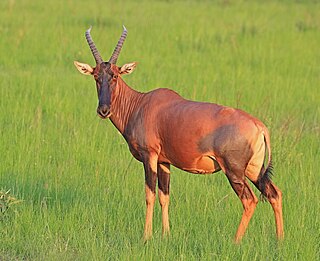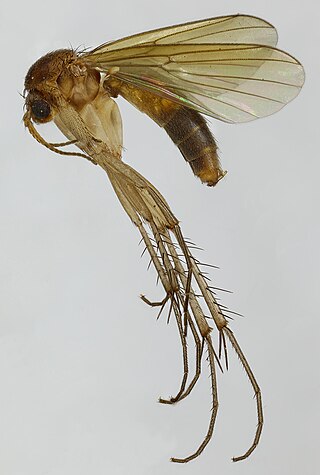
Jasmine is a genus of shrubs and vines in the olive family of Oleaceae. It contains around 200 species native to tropical and warm temperate regions of Eurasia, Africa, and Oceania. Jasmines are widely cultivated for the characteristic fragrance of their flowers. Additionally a number of unrelated species of plants or flowers contain the word "jasmine" in their common names.

Bassariscus is a genus in the family Procyonidae. There are two extant species in the genus: the ringtail or ring-tailed cat and the cacomistle. Genetic studies have indicated that the closest relatives of Bassariscus are raccoons, from which they diverged about 10 million years ago in the Tortonian Age of the Miocene. The two lineages of Bassariscus are thought to have separated after only another two million years, making it the extant procyonid genus with the earliest diversification. Later diversification in the genus in the Pliocene and Pleistocene saw the emergence of two extinct species, Bassariscus casei and Bassariscus sonoitensis, respectively. Due to the more digitigrade stance of their legs compared to the plantigrade stance of other members of Procyonidae, some taxonomies place the genus as a separate family, Bassaricidae.. The name is a Greek word for fox ("bassaris") with a Latinized diminutive ending ("-iscus"). The genus was named by Elliott Coues in 1887, having previously been described by Lichtenstein in 1830 under the name Bassaris. Coues proposed the word "bassarisk" as the English term for animals in this genus. Its habitat includes semi-arid areas in the southwestern United States, the whole of Mexico, as well as moist tropical forests in Central America.

Deirochelys is a genus of freshwater turtle in the family Emydidae, the pond and marsh turtles. It contains one extant species, the chicken turtle, which is native to the southeastern United States. A second extinct member, Deirochelys carri, is known from a fossil found in Alachua County, Florida. The genus was first described by Louis Agassiz in 1857, and its name is derived from the Ancient Greek words for "neck" (deirḗ) and "tortoise" (khélūs), referring to the particularly long necks of these turtles.

The genus Damaliscus, commonly known as damalisks, is a genus of antelope in the family Bovidae, subfamily Alcelaphinae, found in Africa.

Anthribidae is a family of beetles also known as fungus weevils. The antennae are not elbowed, may occasionally be longer than the body and thread-like, and can be the longest of any members of Curculionoidea. As in the Nemonychidae, the labrum appears as a separate segment to the clypeus, and the maxillary palps are long and projecting.

Cassida is a large Old World genus of tortoise beetles in the subfamily Cassidinae. The natural history of Cassida sphaerula in South Africa is a typical life cycle. Several species of Cassida are important agricultural pests, in particular C. vittata and C. nebulosa on sugar beet and spinach. The thistle tortoise beetle has been used as a biological control agent against Canada thistle.

Sphindidae is a family of beetles, in the suborder Polyphaga. They are called slime mold beetles due to their exclusive feeding on slime molds during adult and larval stages, other aspects of their life history are obscure. Palaeontological discoveries since 2015 have added to the geologic history of Sphindidae, including the discovery of Libanopsis, placed in the extinct subfamily Libanopsinae.
Episoriculus is a genus of shrew in the red-toothed shrew subfamily. Its common is brown-toothed shrew. It has been described as a subgenus to Soriculus in the past. The genus occurs at a number of locations in Asia, including Nepal and China.

Mycetophila formosa is a Palearctic species of 'fungus gnat' in the family Mycetophilidae. Mycetophila formosa is found in forest or wooded areas where the larvae develop in Phlebia radiata and moist, strongly decayed wood of birch and spruce log bearing Trechispora hymenocystis.

Mycetophila fungorum is a Palearctic species of 'fungus gnats' in the family Mycetophilidae. Mycetophila fungorum is found in forest or wooded areas where the larvae develop in Agaricales and also obtained with emergence traps over dead wood, soil and ground flora.

Mycetophila luctuosa is a Palearctic species of 'fungus gnats' in the family Mycetophilidae. Mycetophila luctuosa is found in forest or wooded areas where the larvae develop in Neolentinus lepideus, Kretzschmaria deusta, Chondrostereum purpureum, Sebacina incrustans, Neolentinus tigrinus, Pleurotus spp., Trametes versicolor and a wide range of epigeic fungi, mostly Russulaceae.

Mycetophilini is a tribe of fungus gnats in the family Mycetophilidae. There are about 8 genera and at least 220 described species in Mycetophilini.

Mycetophilinae is a subfamily of fungus gnats in the family Mycetophilidae. There are more than 30 genera and 2,000 described species in Mycetophilinae. There are two tribes, Exechiini and Mycetophilini.
Paracosmus is a genus of bee flies in the family Bombyliidae. There are about five described species in Paracosmus.

Archilestris is a genus of robber flies in the family Asilidae. There are about six described species in Archilestris.
Bithoracochaeta is a genus of house flies, in the family Muscidae. There are about 13 described species in Bithoracochaeta.
Mycetophila sigmoides is a species of fungus gnats in the family Mycetophilidae.
Cephalonomia is a genus of parasitoid wasps in the family Bethylidae. There are more than 20 described species in Cephalonomia.

Mycetophila unipunctata is a species of fungus gnats in the family Mycetophilidae.














